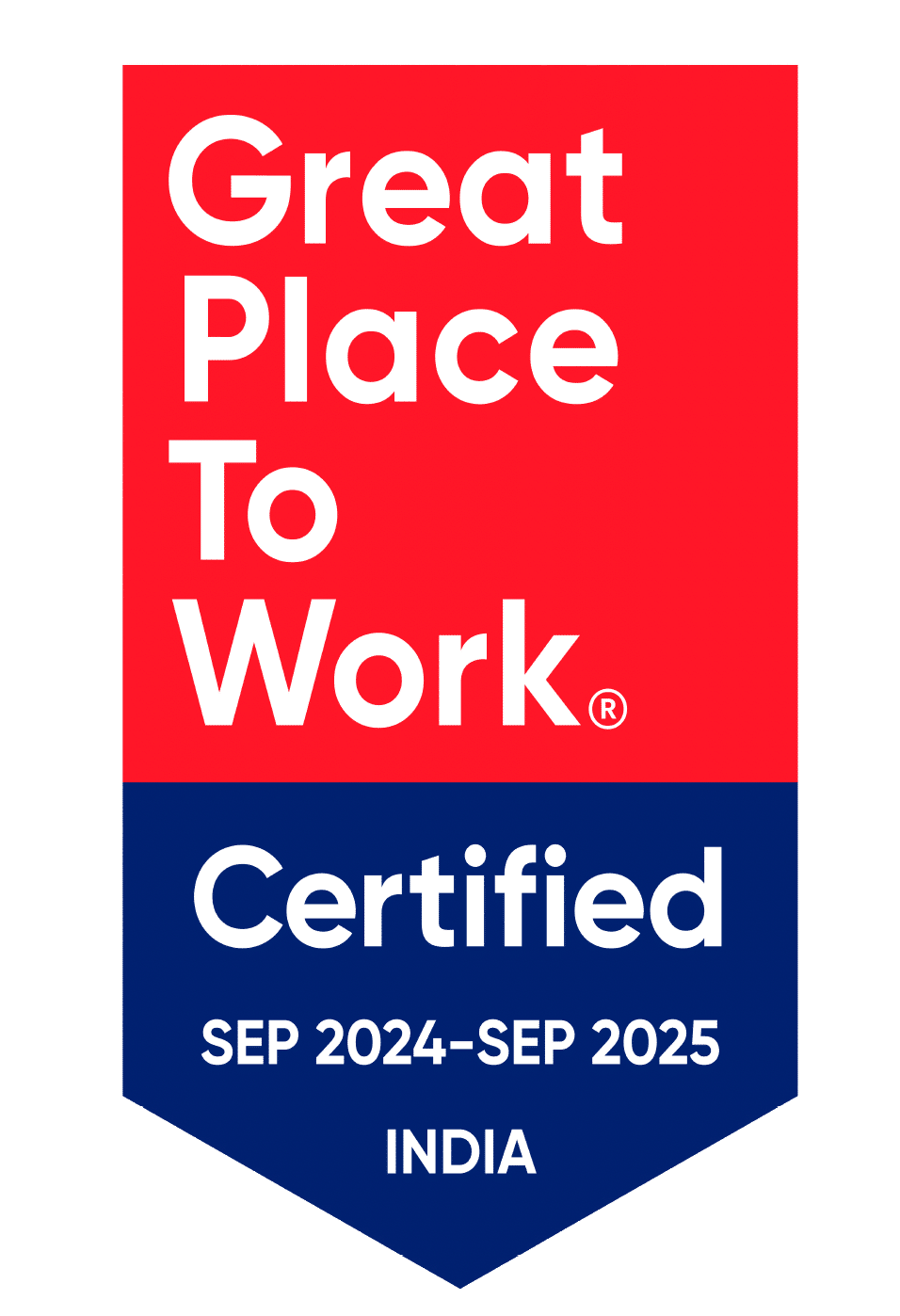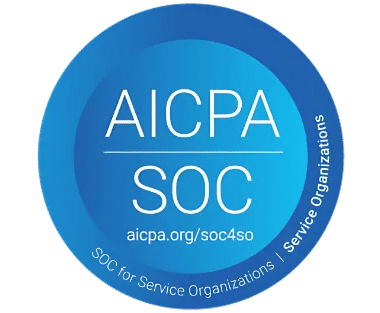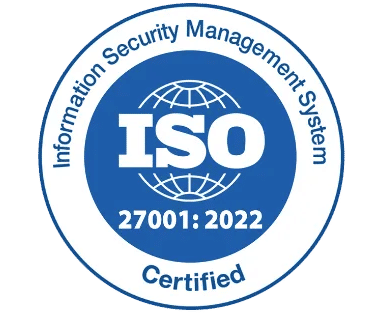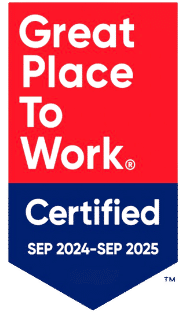What Is Contract Negotiation Workflow: Create Better Deals
_icsoFlg3_.png)
Great businesses do not just negotiate contracts they own the process. A good contract negotiation workflow ensures clarity, speed, and confidence at every stage.
With swift approvals, decisions move forward effortlessly. Seamless collaboration keeps teams aligned, ensuring a smooth and efficient process. Strong, well-defined agreements build trust and lay the foundation for long-term success.
Everything flows. Every deal moves forward with precision. Your business grows faster and stronger.
When your workflow works, success follows. In this blog we will see how we will
What Is Contract Negotiation Workflow
A contract negotiation workflow is a structured, step-by-step process that ensures a legal contract moves smoothly through various negotiation stages. Each phase has specific requirements that must be met before advancing to the next step. Businesses often use specialized software to streamline this workflow, allowing stakeholders to provide input, request modifications, and track progress efficiently.
The process typically includes:
- Stakeholders suggesting changes and requesting revisions.
- Teams collaborating to finalize terms and approvals.
- Software tracking versions and maintaining transparency.
Using a structured workflow process error, speeds up negotiations, and ensures all parties work with the latest contract version.
Importance of Contract Negotiation Workflow
A well-structured contract negotiation workflow not only simplifies the process but also ensures accuracy, accountability, and seamless collaboration. Here’s why businesses need a strong workflow to handle document negotiations effortlessly.
1) Streamlines the Negotiation Process
Without a clear workflow, agreement negotiations can become challenging. A structured process keeps everything organized by outlining each step, ensuring that employees know what needs to be done, by whom, and when. It eliminates confusion, reduces delays, and speeds up decision-making.
- Defines each stage of the negotiation clearly.
- Ensures tasks are assigned to the right people.
- Eliminates unnecessary back-and-forth.
2) Makes Work Easier for Employees
Contracts go through many hands before they are approved. Without a centralized system in place, employees may feel lost, unsure of what needs to be done next or whom to contact. A structured workflow removes guesswork and lets them focus on their tasks without unnecessary stress.
- Employees can see exactly which stage a contract is in.
- They know what actions they need to take next.
- They can quickly identify who else is involved and when their input is needed.
When employees have clarity, they work with confidence. There’s no scrambling to find documents, no wasted hours chasing approvals, and no frustration over missing details.
3) Increases Efficiency
Managing contracts can be complex, especially when multiple agreements are in progress simultaneously. A well-structured workflow brings clarity and organization, allowing businesses to handle contracts efficiently without overburdening employees.
- Tasks are divided into structured steps, making the process more manageable.
- Time spent searching for documents or awaiting approvals is significantly reduced.
- Employees can concentrate on their primary responsibilities instead of administrative tasks.
4) Creates Better Coordination Between Teams
Legal teams, finance departments, and management often need to work together to finalize agreements. Without a contract management software, documents can go back and forth endlessly, leading to delays and confusion. A structured workflow keeps every department aligned and working toward the same goal.
- Teams know when their input is needed and what actions to take.
- Fewer misunderstandings occur, improving teamwork and accuracy.
- The approval process moves forward without unnecessary delays.
5) Boosts Productivity
A proper contract negotiation workflow simplifies negotiations by ensuring approvals are obtained swiftly and the latest document version is always accessible. This reduces administrative overhead and accelerates the approval process.
- Optimizes tracking and maintains version accuracy.
- Minimizes reliance on email follow-ups.
- Facilitates faster finalization and contract execution.
How to Get Ready for a Successful Negotiation Workflow
To ensure a smooth and successful contract negotiation workflow, here are some steps to consider,
- Identify key priorities and articulate their importance to maintain a focused and strategic negotiation.
- Establish clear non-negotiable terms and determine a walk-away point to facilitate confident decision-making.
- Define an optimal outcome while remaining adaptable to secure favourable terms without unnecessary concessions.
- Foresee potential objections and develop well-reasoned responses to strengthen your position.
- Conduct negotiations with a composed, strategic approach to foster productive discussions and achieve positive results.
Important Considerations Before Negotiating a Contract
Effective agreements are built on careful preparation, clear communication, and strategic thinking. Before starting discussions, here are the essential aspects to consider.
1) Define Your Objectives and Priorities
- Clearly outline the key goals and expected outcomes of the agreement.
- Identify critical terms that cannot be compromised and areas where flexibility is possible.
- Align all internal stakeholders on the primary objectives to maintain consistency during talks
2) Conduct Thorough Research
- Research the vendor background, financial health, and past contractual dealings.
- Review industry standards and legal requirements to ensure that terms are compliant.
- Evaluate potential risks and plan strategies to mitigate them.
3) Understand the Other Party’s Needs
- Identify their goals, challenges, and areas of concern to foster a collaborative environment.
- Determine where interests overlap to create mutually beneficial terms.
- Prepare responses for any objections they may raise to keep discussions moving forward.
4) Clarity in Terms and Conditions
- Clearly define responsibilities, timelines, and deliverables for both parties.
- Set precise terms for pricing, payment structures, and penalties for non-compliance.
- Include clear methods for resolving disputes or disagreements in the future.
5) Develop a Negotiation Strategy
- Evaluate your position and leverage based on market conditions and alternatives available.
- Establish a balanced approach, being firm on non-negotiable aspects while showing flexibility in other areas.
- Prepare to offer concessions in less critical areas to secure more important terms.
Considering these factors in advance can help guide your discussions, making them more focused and effective while safeguarding your best interests.
Challenges During the Contract Negotiation Workflow
It often comes with various challenges that can hinder the smooth progression of discussions. One of the primary obstacles is the misalignment of expectations between the parties involved.
1) Lack of Clarity and Expectations
One of the most common challenges in negotiations is the misalignment of expectations between the parties. When there is a lack of clarity regarding terms, responsibilities, and objectives, confusion and disputes are likely to arise. Clear communication from the beginning is essential to ensure both parties are on the same page.
2) Resistance to Flexibility
In some cases, one or both parties may be unwilling to compromise on certain terms, making it difficult to reach an agreement.
This resistance can slow down negotiations or even result in the failure to reach a mutually beneficial deal. A collaborative attitude, with openness to adjust certain terms, is key to overcoming this challenge.
3) Complex Legal Language
Contracts often contain complex legal terms and provisions that may be difficult for non-legal professionals to understand.
Misinterpretations of this legal language can create unnecessary risks or misunderstandings. It is crucial for all parties to ensure they fully understand the legal implications of the terms, or to consult with legal experts when necessary.
4) Time Constraints
Tight deadlines often create pressure during negotiation process, pushing both parties to make decisions quickly.
This urgency can result in incomplete discussions, where crucial aspects of the agreement are ignored or inadequately addressed.
As a result, time constraints can compromise the quality of the final agreement. To prevent this, it is essential to allocate enough time for thoughtful, detailed discussions, ensuring that all aspects of the contract are carefully reviewed and agreed upon.
5) External Factors That Disrupt Negotiations
Negotiations are rarely static, and external factors such as shifts in market conditions, new information, or unforeseen risks can significantly disrupt the process.
For example, changes in economic conditions or regulatory requirements might prompt the need to revise timelines, costs, or deliverables.
To navigate these challenges successfully, being adaptable is essential. It is important to approach each change proactively, reassessing priorities and ensuring both parties remain aligned with the new circumstances.
Best practices for your contract negotiation workflow
In the fast-paced world of business, agreement negotiation is often a make-or-break process. Whether you’re dealing with new clients, partners, or vendors, the way you approach contract negotiation workflow can significantly impact your company’s success
Here is how you can elevate your process, step by step, with actionable tips and strategies that get results.
1) Prepare with Precision
Preparation is not just about knowing the contract terms it is about understanding the other party’s needs, concerns, and motivations. Before entering any negotiation, do your groundwork.
- Clearly define your goals for the negotiation. Are you looking for a better price, longer timelines, or more favourable clauses? Know where you can compromise and where you can’t.
- Look beyond their business goals. Understand their negotiation history, typical deal structures, and even their past agreements. This insight will give you an edge in predicting their approach.
- Having a standard contract template tailored to your needs can save you valuable time. Customize it to fit various scenarios but always be ready to adapt when necessary.
2) Establish Rapport and Build Trust from the Start
First impressions are critical in negotiating the agreements, but the true success lies in building a relationship that fosters open, productive discussions throughout the process.
- Start the negotiation by identifying mutual objectives or values that both parties share. This helps reduce tension and creates a collaborative atmosphere, making it easier to find common solutions.
- Clearly state that your goal is to reach an agreement that benefits both sides. Being open about your intentions from the start helps prevent misunderstandings
3) Clarify Every Terms
Having unclear clauses is a deal-breaker in contracts. If a term is unclear, it will lead to confusion down the line. Avoid vague language and get every detail in writing. Unclear terms can lead to confusion and complications. Ensure all aspects of the contract are explicitly stated and leave no room for misinterpretation.
- Clearly define every term, including payment schedules and deliverables, to ensure both parties are fully aligned.
- Avoid complicated legal terms. Clear, straightforward language ensures the contract is easily understood and reduces the risk of miscommunication.
- Regularly confirm and summarize key points during discussions to ensure both parties are on the same page before finalizing the contract.
4) Plan for Strategic Negotiation
Effective negotiation in contracts are about creating win-win outcomes where both parties feel they’ve gained value. By approaching negotiations with a positive and collaborative mindset, you can build stronger partnerships and achieve long-term success.
- Look for flexible options that meet the needs of both sides, turning negotiations into a successful collaboration.
- Listen to the other vendor priorities to find solutions that benefit both sides.
- Offer alternative options when needed, ensuring a smooth and productive negotiation process.
5) Review, Revise, and Refine: Seek Expert Input
Thorough preparation is key, but having an additional perspective can elevate the quality of your contract. A trusted colleague or legal professional can catch crucial details you might have missed, ensuring the contract is flawless and fully aligned with your goals. Always seek expert review to strengthen your agreements and safeguard your interests.
- Involving your team in the review process will ensure everyone is aligned with the terms. A fresh perspective will help spot risks or unclear points.
- For contracts with higher stakes or complex terms, you will always seek legal advice. Clear language will prevent risks that could harm your business.
Outcome of Effective Contract Negotiation Workflow
A structured workflow to negotiate contracts brings numerous advantages that can significantly enhance your business operations. Here are five key benefits,
1) Reduces Contract Cycle Time
With a well-structured contract negotiation workflow, the entire process from drafting to approval becomes more efficient.
By automating key stages such as document routing, approvals, and tracking, businesses can significantly reduce the time it takes to finalize a contract.
This allows organizations to close deals faster, accelerating revenue generation and improving overall business agility.
2) Ensures Consistent Quality and Compliance
A standardized workflow to negotiate the agreements ensures that every contract follows the same process and includes the necessary compliance checks.
This consistency helps avoid legal and compliance risks, ensuring that contracts meet all regulatory requirements, internal policies, and industry standards.
By ensuring each contract is properly reviewed and vetted at every stage, businesses can prevent costly errors or legal disputes in the future.
3) Improves Negotiation Transparency
A formal workflow increases transparency by providing clear visibility into every step of the process.
Both internal and external stakeholders can track the status of negotiations, see who is responsible for which tasks, and stay updated on the progress of each contract.
This level of transparency minimizes misunderstandings, ensures accountability, and fosters trust between teams and business partners.
4) Enhances Risk Management
A structured workflow helps businesses identify potential risks early in the negotiation process. With automated alerts and built-in risk assessment tools, teams can flag problematic terms or clauses before they become major issues.
This proactive approach to risk management ensures that contracts are scrutinized, reducing the likelihood of disputes or expensive post-signing negotiations.
5) Promotes Scalability and Growth
As businesses grow, so do the number and complexity of contracts. A proper agreement negotiation workflow allows companies to scale their contract management processes without compromising quality.
With centralized agreement tracking, automated approvals, and standardized templates, organizations can handle a higher volume of contracts efficiently, supporting business expansion while maintaining control over the negotiation process.
6) Boosts Vendor and Partner Relationships
A good approach negotiables fosters stronger relationships with vendors, clients, and partners by ensuring clarity, transparency, and fairness throughout the process.
When both parties can see that negotiations are handled professionally and efficiently, trust is built, and partnerships are strengthened. This results in smoother collaborations and long-term business relationships.
Conclusion
A well-structured contract negotiation workflow is crucial for driving efficiency, reducing delays, and enhancing collaboration across your organization. By adopting a clear and organized approach, your business can achieve faster decision-making, ensure consistent compliance, and foster stronger relationships with partners.
Leverage a simplified way to negotiate to contracts improve your processes, boost productivity, and close deals with confidence. Get started with CLM 365 today. Our demo specialist is ready to assist you and guide you through a personalized demo.
Frequently Asked Questions
How does contract negotiation workflow benefit businesses?
It improves efficiency, reduces delays, promotes accountability, and ensures that contracts are negotiated consistently.
What is the typical timeline for completing a negotiation?
It depends on the complexity of the contract, but a structured workflow can shorten the timeline significantly.
What challenges can arise during negotiating an agreement?
Challenges during negotiations in the agreements can include misunderstandings about what each party expects, unwillingness to compromise, and complicated legal language that is hard to understand.
How do I improve the transparency during the negotiation process?
To improve transparency during the negotiation process, make sure everyone involved can easily track the progress, view updates, and know the status of the negotiations. This helps avoid misunderstandings and keeps everyone on the same page.
Table of Contents
- 1. What Is Contract Negotiation Workflow
- 2. Importance of Contract Negotiation Workflow
- 3. How to Get Ready for a Successful Negotiation Workflow
- 4. Important Considerations Before Negotiating a Contract
- 5. Challenges During the Contract Negotiation Workflow
- 6. Best practices for your contract negotiation workflow
- 7. Outcome of Effective Contract Negotiation Workflow
- 8. Conclusion:










_svxLrd-8yH.png)

_2VYSFUTN5m.png)

_JiluXJRGNl.svg)

_2djTKNocf.png)





_Rapo0hRMBy.png)










